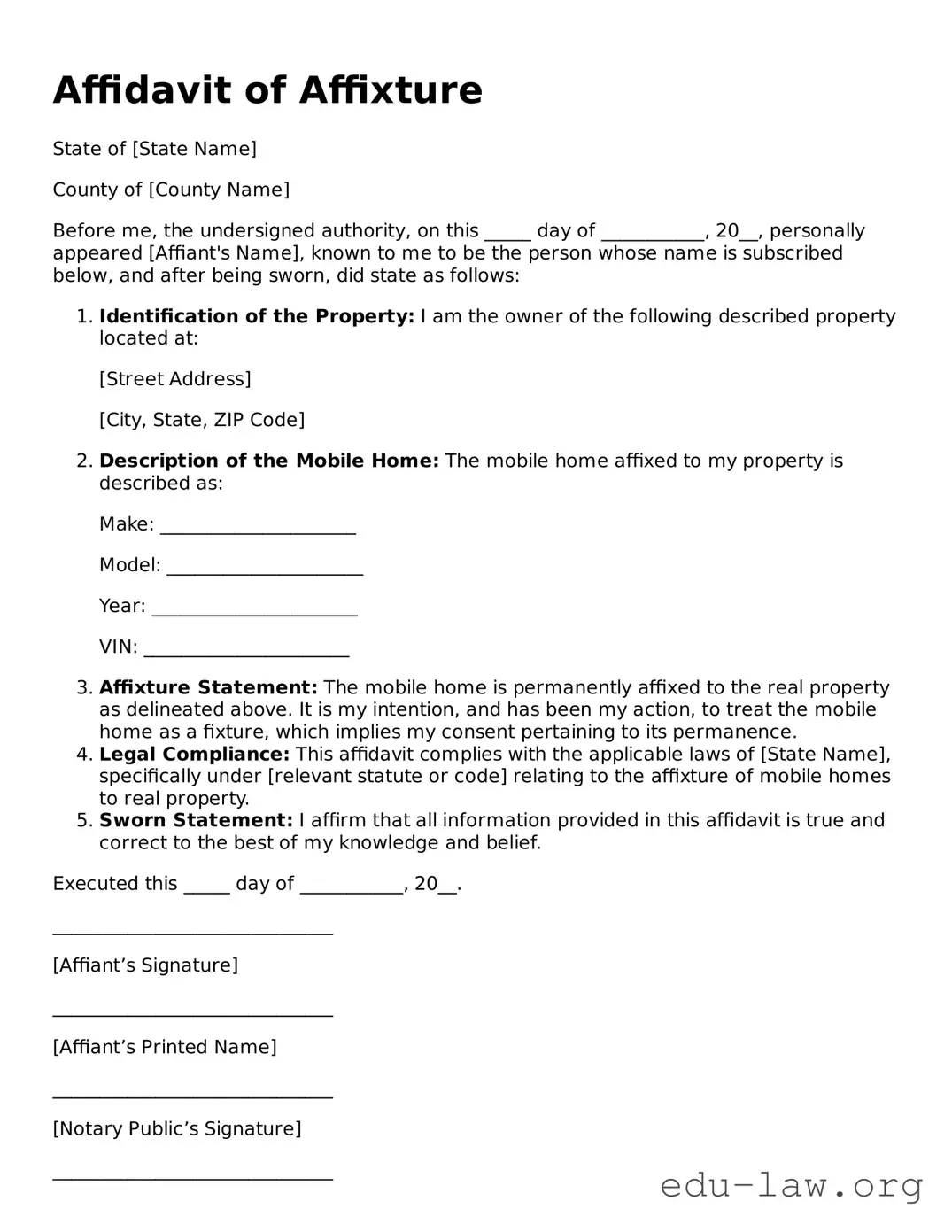Affidavit of Affixture
State of [State Name]
County of [County Name]
Before me, the undersigned authority, on this _____ day of ___________, 20__, personally appeared [Affiant's Name], known to me to be the person whose name is subscribed below, and after being sworn, did state as follows:
- Identification of the Property: I am the owner of the following described property located at:
[Street Address]
[City, State, ZIP Code]
- Description of the Mobile Home: The mobile home affixed to my property is described as:
Make: _____________________
Model: _____________________
Year: ______________________
VIN: ______________________
- Affixture Statement: The mobile home is permanently affixed to the real property as delineated above. It is my intention, and has been my action, to treat the mobile home as a fixture, which implies my consent pertaining to its permanence.
- Legal Compliance: This affidavit complies with the applicable laws of [State Name], specifically under [relevant statute or code] relating to the affixture of mobile homes to real property.
- Sworn Statement: I affirm that all information provided in this affidavit is true and correct to the best of my knowledge and belief.
Executed this _____ day of ___________, 20__.
______________________________
[Affiant’s Signature]
______________________________
[Affiant’s Printed Name]
______________________________
[Notary Public’s Signature]
______________________________
[Notary Public’s Printed Name]
My commission expires: _______________
Seal:
